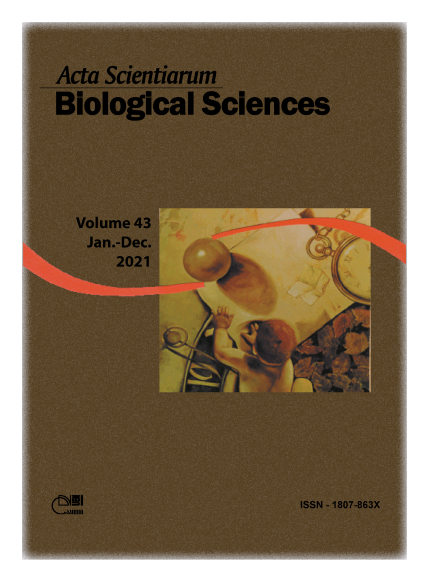Standardization of resazurin use in susceptibility testing of natural products against yeasts in planktonic cells and in biofilms formation
Resumo
Natural products, such as the ethanolic propolis extract (PE), have been shown to be a safe and effective therapeutic alternative for the treatment of fungal skin and nail diseases. However, the presence of the resin and the physicochemical characteristics of the extract sometimes difficult the reading and determination of breakpoints of the in vitro tests, evidencing the need for alternatives that facilitate the reading. The present study aimed to standardize the use of resazurin in tests of susceptibility of PE with planktonic yeast cells and biofilm forms. The antifungal activity of PE was determined by minimum inhibitory concentration (MIC) and we observed that, for all Candida spp. tested, the most reproducible MIC results were obtained when resazurin was placed after 24 hours of incubation and remained more 24 hours with yeasts plus PE. For encapsulated yeasts, there was no dye reduction and color transition. Resazurin was also used for the evaluation of minimal biofilm inhibitory concentration and minimal biofilm eradication concentration and it was metabolized and reproduced the action of PE on Candida biofilms. In addition, microdilution checkerboard plates were made with the dye, which assisted reading the result of the interaction between PE and nystatin. We observed that the resin, the color and the turbidity of the PE slightly changed the color of the resazurin in high concentrations of the extract and did not impair the reading. Therefore, the resazurin standardization tests were proven to be efficient and grounds that it should be used as an auxiliary methodology for reading and interpretation of the susceptibility tests for non-encapsulated yeasts with natural products, which form turbidity or precipitation, such as propolis.
Downloads
DECLARAÇÃO DE ORIGINALIDADE E DIREITOS AUTORAIS
Declaro que o presente artigo é original, não tendo sido submetido à publicação em qualquer outro periódico nacional ou internacional, quer seja em parte ou em sua totalidade.
Os direitos autorais pertencem exclusivamente aos autores. Os direitos de licenciamento utilizados pelo periódico é a licença Creative Commons Attribution 4.0 (CC BY 4.0): são permitidos o compartilhamento (cópia e distribuição do material em qualqer meio ou formato) e adaptação (remix, transformação e criação de material a partir do conteúdo assim licenciado para quaisquer fins, inclusive comerciais.
Recomenda-se a leitura desse link para maiores informações sobre o tema: fornecimento de créditos e referências de forma correta, entre outros detalhes cruciais para uso adequado do material licenciado.












1.png)




3.png)













